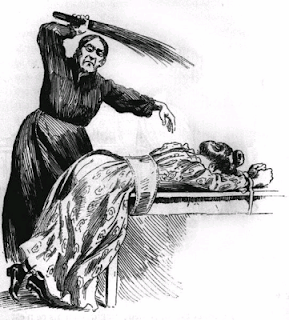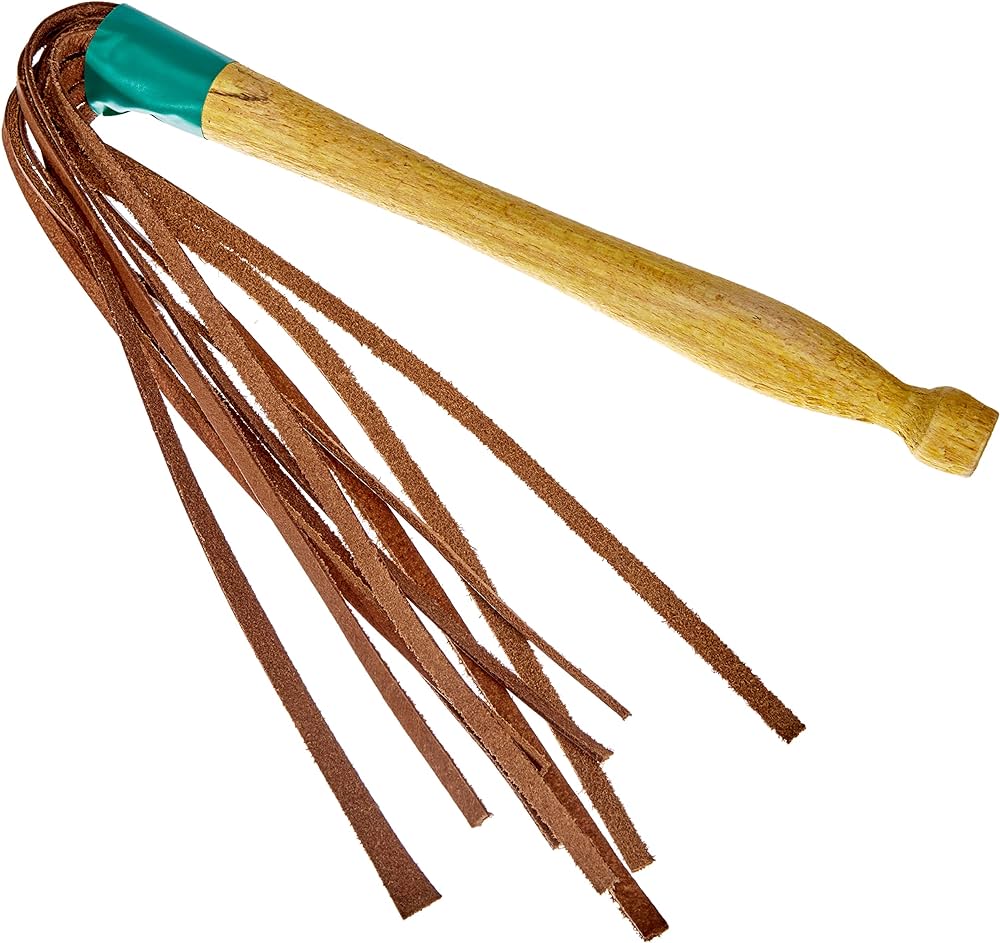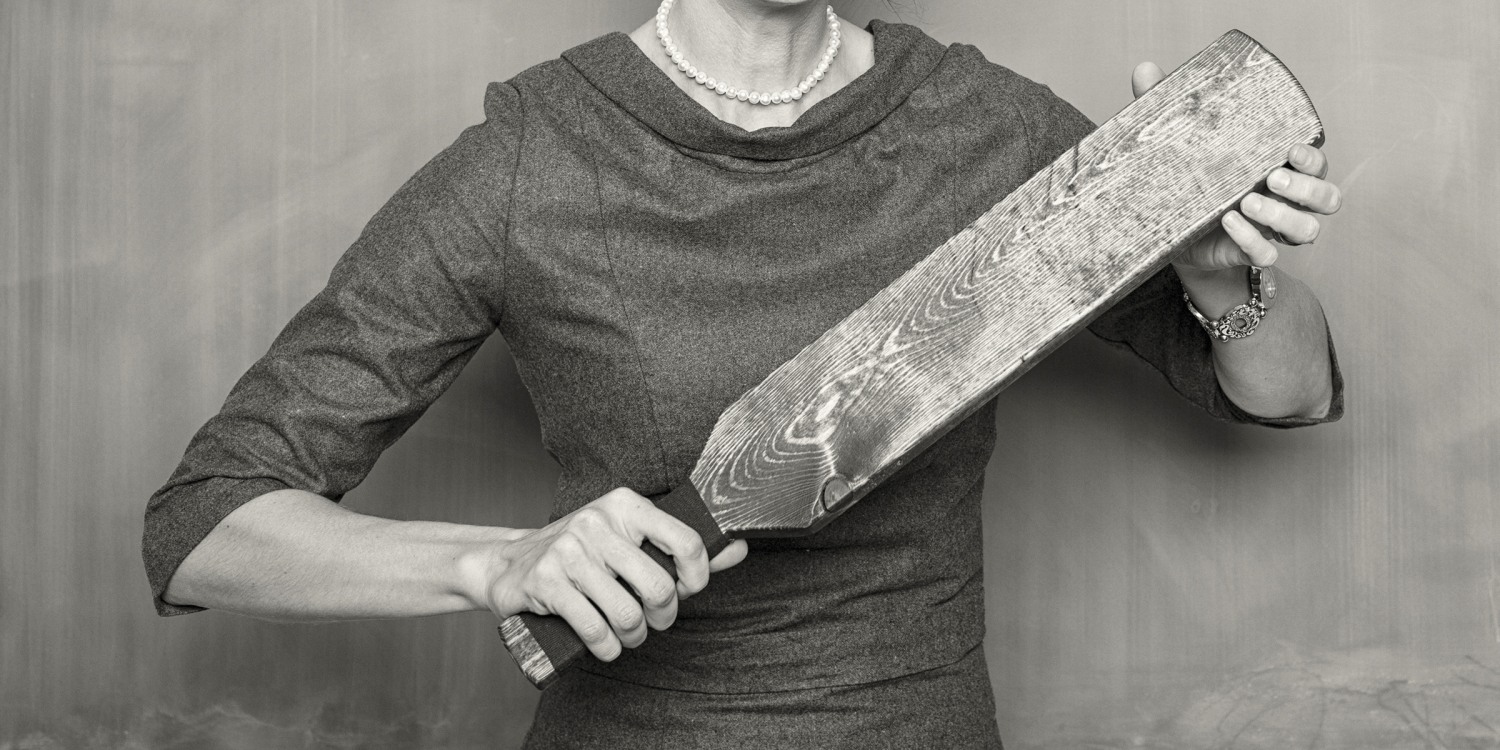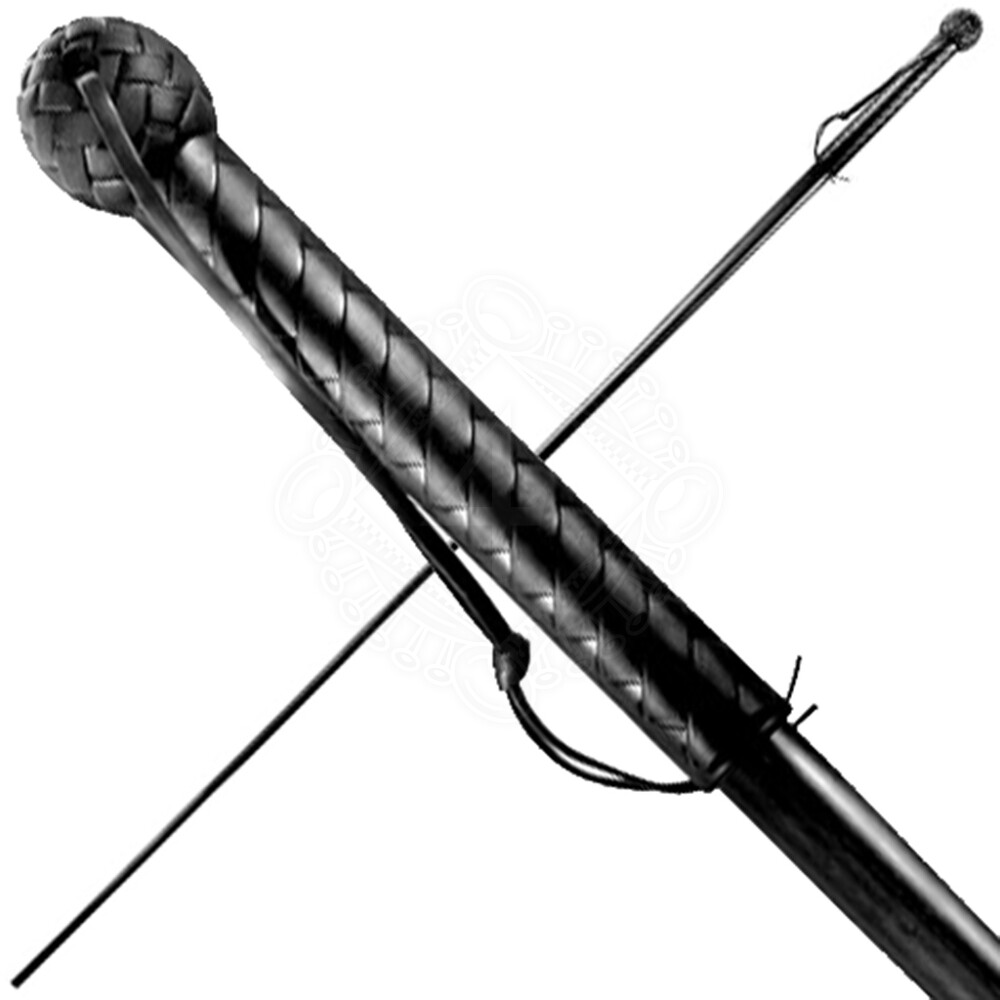
Everyone knows and enjoys the feel of the hand landing on a shapely female rear end. But of course there are many other, often traditional, instruments of chastisement. Some are associated with particular countries. Here we list a few of them here. (If you are interested in the cane, click HERE to go to CaneWorld where the British instrument of honour is discussed in detail.)

The birch was, essentially, the predecessor
of the cane. It was the most common school and judicial punishment in
Europe up to the mid-19th century, when caning gained increasing
popularity. According to some accounts, even the legendary sting of
the cat o' nine tails was less feared than the birch in certain
prisons. The birch was always applied to the bare buttocks (as also on
the Continent), a humiliation usually befalling boys (like the boy's
cat, likewise on the naked posterior).
Birching was also
featured in the French Revolution. One leader of the revolution,
Anne-Josèphe Théroigne de Méricourt, went mad, ending her days in an
asylum after a public birching. On 31 May 1793, the Jacobin women
seized her, stripped her naked, and flogged her on the bare bottom in
the public garden of the Tuileries. Judicial birching in 20th-century
Britain was used much more often as a fairly minor punishment for male
juveniles, typically for petty larceny, rather than as a serious
penalty for adult men. This was applied to boys aged up to fourteen in
England and Wales, and up to sixteen in Scotland. In this juvenile
version, the birch was much lighter and smaller, and the birch was
administered privately by a policeman, usually immediately after the
magistrate's court hearing, either in a room in the court building or
at the nearest police station.
In Lewis Carroll's
early poem The Two Brothers, 1853, one laments: "Oh would I were back
at Twyford School, Learning lessons in fear of the birch!"

A switch in use in Adam Johann Braun's Die Mädchenschule, 1789
Switches are typically made of strong and flexible wood such as hazel, birch, or hickory; Willow branches are also used, as well as branches from strong trees and large shrubs. They are often obtained from a garden or an orchard nearby, or taken from the wild. In the South-Eastern United States, fresh-cut, flexible cane (Arundinaria) is commonly used. All this effectively makes them a cross between a cane and a birch. For optimal flexibility, they are cut fresh shortly before use, rather than keeping them for reuse over time. Some parents used to make the cutting of a switch an additional form of punishment for a child, by requiring the disobedient child to cut their own switch. In the Swedish Film, I, a Woman (1965), the heroine, Siv, is chased through woods by her boyfriend. When he catches her, he cuts a switch and applies several strokes to her bottom.


The flogger is the favourite instruments of Impact play, "the sexual practice in which one person is struck (usually repeatedly) by another person for the gratification of either or both parties which may or may not be sexual in nature. It is considered a form of BDSM. There are a number of activities that qualify as impact play. In erotic spanking, the sub is struck on the buttocks either with the dom's open hand, or an implement such as a paddle, cane or riding crop." However, the flogger is the dominant instrument here.
The use of a flogger, however, means that the dom must take great care to hit the intended target area, and avoid wrapping; when a whip or flogger makes contact with the target area somewhere up its length and the remaining length wraps around the sub's body to deliver a sharp, non-erotic, and possibly injurious off-target blow, such as to the hipbones or ribs. The longer the fall, the more skill is required by the Dom to land a safe blow. Advanced flogging techniques use a pair of floggers employed in a martial arts style alternating pattern, a technique commonly referred to as "florentining" or "florentine flogging".

A martinet is a short, scourge-like (multi-tail) type of whip made of a wooden handle of about 25 centimetres (9.8 in) in length and about ten lashes of equal, relatively short length. The lashes are usually made of leather, but sometimes soap-stiffened cords are used in place of leather. It was a traditional instrument of physical punishment in France and other European countries. The lashes are light, so they are ineffective unless it is applied naked. The advantage is it gives a stinging pain on bare skin, but will not cause an injury. Around 1962, annual production of martinets in France was estimated about 300,000 per year and 33-50% of French households were estimated to own a martinet.

The paddle is an implement beloved by Americans, and used to strike a person on the buttocks. The act of spanking a person with a paddle is known as "paddling". A paddling may be for punishment (normally of a student at school in the United States), for fun, or as an initiation or hazing ritual. A paddle has two parts: a handle and a blade. Most paddles are designed to be held with one hand, but a giant paddle may be designed to be held with two hands. The blade is typically 3 to 4 inches (100 mm) wide, 1/4-inch thick, and 1 to 3 feet (0.91 m) in length. Paddles for use in schools are made of wood, or occasionally plastic. Paddles used for school punishments may be roughly hewn from commonly available wood. Occasionally, paddles may have holes drilled into them, so there is less air drag when the paddle approaches the buttocks, and produces more pain. The paddles used for fraternity and sorority initiation ceremonies are often professionally made and engraved with organizational symbols and slogans. Paddles are less popular in Europe where they are considered potentially dangerous. The weight of the wood can cause damage to the recipient. Canes and floggers are very light, minimising damage and maximising pain.

The tawse, sometimes formerly spelled taws (the plural of Scots taw, a thong of a whip), is the implement in Scotland for corporal punishment. Often called the belt, it was used for educational discipline not only in Scotland, but also in schools in a few English cities, e.g., Newcastle upon Tyne, Gateshead, Liverpool, Manchester and Walsall. A tawse consists of a strip of leather, with one end split into a number of tails. The thickness of the leather and the number of tails is variable. Many Scottish makers of horse tack made tawses for local schoolmasters. The official name "tawse" was hardly ever used in conversation by either teachers or pupils, who instead referred to it as either the school strap or the belt, the normal term for an unforked implement. Lochgelly was the home of the most reputed firm that produced tawses, John Dick (Saddlers), and was hence a synonym for that typically Scottish device for corporal punishment.

The sjambok, or litupa, is a heavy leather whip and definately not recommended for impact play. However, it seems to have some type of romanticised aura about it, so is included here. It originates in South Africa, but South African schools always used the cane. It is traditionally made from adult hippopotamus or rhinoceros hide, but it is also commonly made out of plastic. A strip of the animal's hide is cut and carved into a strip 0.9 to 1.5 metres (3 to 5 ft) long, tapering from about 25 mm (1 in) thick at the handle to about 10 mm (3⁄8 in) at the tip. This strip is then rolled until reaching a tapered-cylindrical form. The resulting whip is both flexible and durable.
